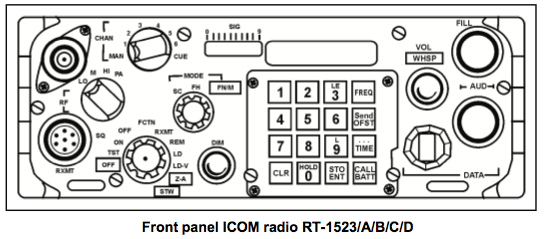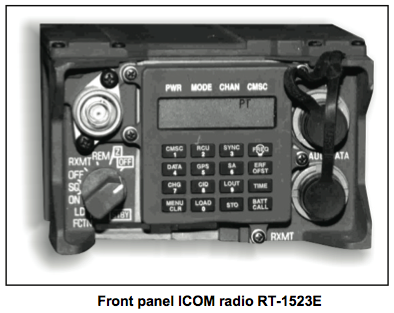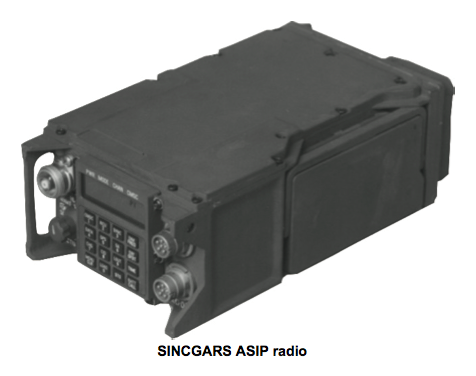RT-1523
GROUND VERSION RECEIVER/TRANSMITTER
Either the RT-1523/A/B/C/D or the RT-1523E comprise the core component of all ground-based radio sets. The RT-1523 series has internal COMSEC circuits (source of the ICOM designation). The ground versions are equipped with a whisper mode for noise restriction during patrolling or while in defensive positions. The RTO whispers into the handset and is heard at the receiver in a normal voice.
ADVANCED SYSTEM IMPROVEMENT PROGRAM
The SINCGARS ASIP increases the performance of the SINCGARS SIP (RT-1523 C/D models). It also increases its operational capability in support of the tactical Internet, specifically improved data capability, manpower and personnel integration requirement compliance, and flexibility in terms of interfaces with other systems.
All ASIP radios can be physically remoted by another ASIP radio up to 4 km (2.4 miles) away, via a two-wire twisted pair (typically WD-1 or WF-16). To remote a radio, an external two-wire adapter is used as the interface between the radio and the wires. This remote control feature can be performed between the dismounted RT and the VAA, or between two dismounted RTs. Another host controller can control the ASIP radio via the external control interface when the ASIP radio system is integrated as part of a larger system.
Enhanced System Improvement Program Capabilities
The SINCGARS ASIP radio incorporates an ESIP waveform. The waveform includes optimizations to the algorithms of the noisy channel avoidance scheme, the time of day tracking scheme, and the end of message scheme. Enhancements include
- ESIP waveform - implements a faster channel access protocol, which reduces net fragmentation by shortening the collision intervals between voice and data transmissions. The result is the reduction of voice and data contention problems associated with shared voice and data networks.
- Noisy channel avoidance algorithm - always reverts to a known good frequency instead of constantly searching for clear frequencies, thus increasing the FH synchronization probability in high noise and jamming conditions.
- Time of day enhancement - uses a reference BIT that assures time constraints are the same during each transmission.
- End of message enhancement - reduces fade bridging, whereby the transmission would linger even though adding extra end of message hops to increase the detection and probability of synchronization completes the message.


